A Consumer Guide to the Trailing Edge: October, 2011
Recycled Goods (#90)
by Tom Hull
Still working opportunistically. This month I got a big Impulse package from UME, and a smaller CTI one and some Miles Davis from Sony, so that's the bulk of what follows. Everything else has a small story, but most of them aren't fully developed. I felt like playing Glen Campbell's first album after panning his last -- thought about making a project out of it, but didn't get that far. Other records popped up in researching for recent polls on 1978 and 1983 -- the Jarrett was one I had missed, opening the prospect of filling in more holes in my Impulse inventory, but I didn't make any progress there. Same general story for the Go-Betweens, McKinley Mitchell, Sun Ra, the Residents, Rodney Crowell, Willis Jackson, Cheryl Lynn, and Son Seals. The common thread there is that they're old records I wanted to check out, and it makes more sense to write them up here than anywhere else.
For those keeping score, this is my 90th Recycled Goods column, totalling 3066 records.
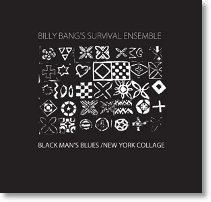 |
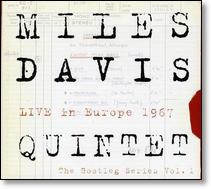 |
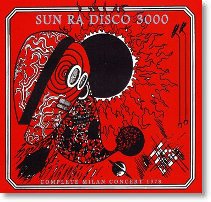 |
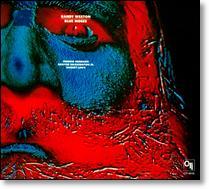 |
Billy Bang's Survival Ensemble: Black Man's Blues/New York Collage (1977-78 [2011], NoBusiness, 2CD): The late, great violinist's first two albums -- the first so obscure I missed it when I assembled a discography for my 2005 Voice piece on Bang. A quartet for the first record, with Bilal Abdur Rahman on tenor and soprano sax, William Parker on bass, and Rashid Bakr on drums. Rahman, an old friend of Bang's, picked up Islam in prison and recorded reluctantly but more often than not his cutting and slashing is terrific here. Both albums are hit and miss, with bits of spoken word spouting political critique -- "when the poor steal, it's called looting; when the rich steal, it's called profit" is one turn of phrase. Second album adds Henry Warner on alto sax and Khuwana Fuller on congas -- Warner's another player who shows up on rare occasions but always makes a big impression. Way back when I would probably have hedged my grade, seeing each album as promising but half-baked, but now they're indisputable pieces of history -- and not just because Bang and Parker went on to have brilliant careers. Also note that the label in Lithuania that rescued them cared enough to provide a 36-page booklet on the era and this remarkable music. A-
Miles Davis Quintet: Live Europe 1967 [The Bootleg Series Vol. 1] (1967 [2011], Columbia/Legacy, 3CD+DVD): Something like this was inevitable -- especially since the DVD was slipped into the 70-CD Miles Davis: The Complete Columbia Album Collection (now no longer complete) -- and the Vol. 1 promises more are in the works. (For comparison, Legacy's Dylan Bootleg series is up to Vol. 9.) The sets were recorded Oct. 11-Nov. 7, 1967, which slots this between Nefertiti and Miles in the Sky in the Davis discography, midway in an empty stretch as far as live recordings go. The group is the Quintet you know so well: Wayne Shorter, Herbie Hancock, Ron Carter, Tony Williams. The set lists recycle, with "Agitation" leading off the first two CDs and both sets on the DVD -- it has a strong trumpet lead to set the stage. Sophisticated music but not so exciting: on the DVD the group is focused, cool and workmanlike, no excess motion or emotion. Not a major find, but a remarkable group. A-
The Go-Betweens: Before Hollywood (1983 [1995], Beggars Banquet): Remastered, with artwork counting this off as the second of six albums, where the Australian group with songwriters Grant McLennan and Robert Forster maturing to the point that their fifth and sixth albums (Tallulah and 16 Lovers Lane were masterpieces. The early albums seemed far spottier, with most of the highlights picked for their 1978-1990 best-of, which explains why half of these songs seem so familiar. Retrospectively, the other half can be seen working toward that future. B+(***)
McKinley Mitchell: The Complete Malaco Collection (1977-81 [1992], Waldoxy): Got his start singing gospel, moved to Chicago and cut some soul ballads in the 1960s to little avail. As disco and funk took over, Malaco refashioned '60s soul as a blues form, finally giving him his one shot at an album. This collects his 1978 eponymous album with half a dozen scattered singles -- the three covers stick out from the consistently understated groove, but they work just as well. B+(***) [R]
Sun Ra: Disco 3000: Complete Milan Concert 1978 (1978 [2009], Art Yard, 2CD): Originally credited to Sun Ra and His Myth Science Arkestra with four cuts on an El Saturn LP, expanded here to nearly three times the runtime. Credits are sparse, but Ra's unique take on electric piano sets up a blocky rhythm that occasionally breaks loose but is regular enough to drive the horns forth -- brilliant trumpet (presumably Marshall Allen) and rousing tenor sax (John Gilmore, natch). And when Ra switches to acoustic piano, his boogie jones comes out. No recognizable disco beats here, but Ra's projecting way into the future. A- [R]
Red Hot + Rio 2 (2011, E1 Music, 2CD): Twenty-some years after the first Red Hot + Blue record turned AIDS-fighting pop stars onto Cole Porter in one of the better songwriter-tribute records ever, I lost track of the series fifteen years ago when the first Red Hot + Rio came out. This one doubles down, swelling to two discs to give extra heft to its second volume status. No lack of authentic Brazilian stars here -- Caetano Veloso, Tom Zé, Joyce Moreno, Os Mutantes, also Seu Jorge, Carlhinos Brown, Bebel Gilberto -- often paired with well-meaning Americans ranging from David Byrne to Aloe Blacc, Of Montreal, and Beirut. I don't have full credits, but the rhythm section more often than not saves the show. Give it some time and you'll find some gems, like the one attributed to Toshiyuki Yasuda ("Aguas de Março"). B+(*) [advance]
The Residents: Duck Stab!/Buster & Glen (1978, Ralph): One of the first groups to disdain the industry and release their own shit, starting with their Beatles-parodying Meet the Residents in 1974 and continuing pretty much unabated at least through 2009. Reissues have lost the second half of their original title, but the songs carry on. The funny voices aren't so funny any more, and the intentional weirdness isn't so weird, but at least their tunes remain tuneful. I've rarely sampled them, but know enough to know that's not a given. B+(**) [R]
Randy Weston: Blue Moses (1972 [2011], CTI/Masterworks Jazz): Started out in the late 1950s as a pianist out to explore new things, especially to connect back to Africa, with Morocco a special interest -- three of four titles here have African place names, the exception "Night in Medina" which moves even further afield. Probably this was Weston's first big band venture -- Don Sebesky is credited with the arrangements, but Weston periodically returned to the big band well, and you can taste the excitement here. While CTI's stars take up the solo slots -- Freddie Hubbard is brilliant, and even Hubert Laws' flutes fit in nicely -- the brass section packs quite some whallop. A-
In Series:
Impulse! Records was founded as a jazz subsidiary of ABC-Paramount Records in 1960, with first Creed Taylor than shortly later Bob Thiele running the label. They were a major jazz label in the 1960s, fading in the mid-1970s, and occasionally revived by subsequent owners -- MCA and Universal (through their Verve subsidiary). To celebrate their 45th anniversary, Verve released a box and a pile of individual artist compilations each titled The Impulse Story. I did an In Series on them at the time, and went back through my library to survey some other albums of note. Back then I wondered why they didn't wait for a big number like their 50th, not realizing that five years later Verve would reduced to little more than a reissue shell. Still, they did manage to come up with something -- evidently thanks to Universal's subsidiary in Germany. Like a jigsaw puzzle, they took 30 relatively obscure albums and pieced them together into 15 of what in early CD days were called twofers. Most of those albums turned out to be new to me -- I recognize 8 that I previously had, 4 of them old friends.
I thought it would be most useful to stage these, with an intro line, a bit including a grade on each separate album, and a summary grade.
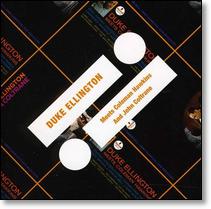 |
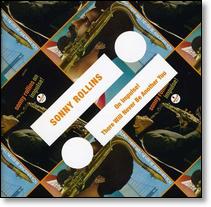 |
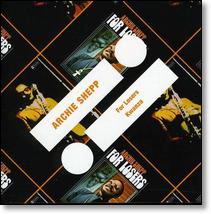 |
Albert Ayler: Tenor saxophonist, was a major avant-garde figure in the mid-1960s, finding spiritual depth in frenzied free noise, but as the decade came to a close he became increasingly scattered, then died at age 34 in 1970, a suicide or a victim of murder or bad luck, no one knows.
- Love Cry (1967-68): Mostly repeated riff pieces with his brother Donald Ayler, no one's idea of a first-rate trumpet player. B
- The Last Album (1969): Hard to figure, coming out a year before his unexpected death. Opens with an oblique guitar solo by Henry Vestine finally joined by Ayler on bagpipes, then you get Mary Maria Parks's spoken word interplay with the saxophonist, then some vintage sounding free sax, then more oddities. The songs are all credited to Parks, his girlfriend at the time. Could find a future in the guitar-sax duet on "Toiling," or Ayler's own past in the bass-sax duet on "Water Music," but falls off the deep end with vocals like "Desert Blood." B
- Twofer: ([2011], Impulse) B
Art Blakey:
The prime drummer of the bebop movement started playing harder in
the 1950s and invented hard bop, running his Jazz Messengers as a
boot camp through which everyone who was anyone in the style passed,
from Horace Silver to Wynton Marsalis. Only cut these two albums on
Impulse.
- Jazz Messengers!!!!! (1961): Lee Morgan, Wayne Shorter, Curtis Fuller, Bobby Timmons, Jymie Merritt -- possibly the greatest of all Blakey groups in what was certainly their banner year. Still, this feels like something Blue Note passed on -- not off by much, but Shorter doesn't shake off Morgan's solos, and the closer never quite engages. B+(***)
- A Jazz Message (1963): How quickly they fall: down to a Quartet, but Sonny Stitt is blazing out of the box, McCoy Tyner takes his blues to another level, and standards as standard as "Summertime" and "The Song Is You" are exceptional. A-
- Twofer: ([2011], Impulse) A-
Alice Coltrane:
Originally Alice McLeod, from Detroit, played piano with Terry Gibbs
before marrying John Coltrane in 1965, soon replacing McCoy Tyner in
her husband's group, until his death in 1967. Her own discography
starts up in 1968, a dense flurry of records up to 1978 followed by
a long break and a 2004 comeback.
- Universal Consciousness (1971): Her main instruments were dense organ and celestial harp, rounded out with a violin trio including Leroy Jenkins. Parts develop a spritely avant-garde feel, but the density leaves you conscious less of the universe than its sheer mass. B
- Lord of Lords (1972): With Charlie Haden, Ben Riley, and twenty-two strings, Coltrane's classical training finally wins out -- the one cover is a slice from Stravinsky's Firebird. B-
- Twofer: ([2011], Impulse) B-
Duke Ellington:
Pianist, composer, bandleader par excellence since he moved his
Washingtonians to Harlem in 1927. In the early 1960s he branched
out, appearing in small groups and ad hoc combos, including such
peers as Louis Armstrong and Count Basie.
- Meets Coleman Hawkins (1962): The tenor sax great was an undemanding sort, delighted to play Ellington songs in a superb combo of Ellingtonians, including Ray Nance, Lawrence Brown, Harry Carney, and Johnny Hodges (a frequent acquaintance over several decades). "Limbo Rock" is so ecstatic someone (Sam Woodyard?) can't help but sing along. After that, they settle in for sublime. A+
- And John Coltrane (1962): A little more unsettled: half the tracks find Ellington replacing Tyner in Coltrane's quartet, the other half add Coltrane to an Ellington piano trio with Aaron Bell on bass and Sam Woodyard on drums. Coltrane even got one of his songs on the program ("Big Nick"), while Ellington graciously offered up his theme song as "Take the Coltrane." Coltrane eventually settles into the groove, but not without putting up a fight, which is half the fun. A-
- Twofer: ([2011], Impulse) A
Curtis Fuller: Hard bop trombonist from Detroit, wrote and arranged enough to get his name up front from 1957 on, but not much of a showboat.
- Soul Trombone (1961): A sextet with Jimmy Heath's tenor sax for soul and Freddie Hubbard's trumpet for sparkle, with Cedar Walton steadying the hard bop rhythm section. Seems tentative to me, getting little mileage out of its star power -- only Hubbard really shines here. B
- Cabin in the Sky (1962):
Music from Vernon Duke (né Vladimir Dukelsky)'s 1940 musical, done up
fancy with a big orchestra arranged and conducted by Manny Albam. The
strings are standard issue shlock, but the brass packs some punch,
and Eddie Costa's vibes and Barry Galbraith's guitar are notable.
B-
- Twofer: ([2011], Impulse) B-
Coleman Hawkins: The first significant tenor saxophonist in jazz history, "the fount of all worthwhile saxophone playing" as one critic put it, perhaps slowing down a bit but still instantly recognizable a couple years ahead of his sudden decline from 1966 to his death in 1969.
- Today and Now (1963): A quartet album with Tommy Flanagan on piano, gets off to a frisky start with "Go Li'l Liza" -- his limbering up of "Li'l Liza Jane" couldn't possibly be more charming -- then moseys through a series of ballads, seemingly effortless but little short of magnificent. A
- Desafinado (1963): Subtitled Plays Bossa Nova & Jazz Samba, a perfunctory submission to a fad that Stan Getz started. The extra guitar and percussion forces everything into a samba beat, but nothing -- not even songs by Jobim and Gilberto -- can keep Hawkins from sounding like himself. A rather silly album, but it's impossible to listen to him without feeling pleasure. B+(*)
- Twofer: ([2011], Impulse): B+(***)
Milt Jackson: The preeminent vibraphone player of the early bebop world, notably working with pianists Thelonious Monk and John Lewis (Modern Jazz Quartet); prolific, adaptable to all styles, an attentive partner with an irrepressible sense of swing.
- Statements (1962): A quartet set matching him with Hank Jones on piano, Paul Chambers on bass, and MJQ's Connie Kay on drums. Jones, like Jackson from Detroit, is equally adept at drawing his partners out. B+(***)
- Jazz 'n' Samba (1964): First four cuts are straight jazz before pianist Tommy Flanagan bows out and guitarist Barry Galbraith and Howard Collins enter for Jobim's title cut. No extra percussion, but Jackson manages to approximate, and the two vocals by Lilian Clark are charming. B+(*)
- Twofer: ([2011], Impulse) B+(**)
Ahmad Jamal:
Pianist, started life in 1930 as Fritz in Pittsburgh, is a unique
stylist but is hard to describe because there's nothing idiosyncratic
about him -- he's the very model of a modern jazz pianist.
- Poinciana Revisited (1969): Piano trio live at Top of the Village Gate in New York, returns to his most famous song -- recorded in 1955 and more famously in 1958 -- in a model program, even the closing Jobim/de Moraes tune fits in. A-
- Freeflight (1971): Same trio two years later live at Montreux Jazz Festival in Switzerland, closing with yet another take of "Poinciana." Starts with Jamal playing electric piano on McCoy Tyner's "Effendi" -- with the fade turned up the notes all but skip off the tape. Recovers somewhat. B+(*)
- Twofer: ([2011], Impulse) B+(***)
Elvin Jones:
Brother of Hank and Thad Jones, at the time best known as the drummer
in the John Coltrane Quartet. Never wrote much, but was charismatic
enough to put together a substantial discography as a leader -- but
not enough to rival Art Blakey.
- Illumination (1963): Full credit: Elvin Jones/Jimmy Garrison Sextet Featuring McCoy Tyner: in other words, the rhythm section with three saxophonists -- Prince Lasha, Sonny Simmons, and Charles Davis -- plugged into Coltrane's slot. Everyone but Jones chips in a song, and Davis's baritone keeps grounded even when the other switch to flute and English horn. B+(*)
- Dear John C. (1965): Looks like a Coltrane tribute, but plays more like Jones's resignation from the quartet: Richard Davis plays bass, Roland Hanna and Hank Jones split the piano spot, and the sax slot goes to altoist Charlie Mariano, on a program that taps Ellington, Gillespie-Parker, Mingus, and some standards. Mariano, of course, is fine, but unconflicted where Coltrane was forever tying himself in knots. B+(**)
- Twofer: ([2011], Impulse) B+(*)
Sonny Rollins:
The most imposing tenor saxophonist to emerge in the 1950s --
Saxophone Colossus was an album title that turned into his
business card -- began and ended the 1960s on hiatus leaving two
sets of work to show for the decade, 1962-64 on RCA and 1965-66
on Impulse!
- On Impulse! (1965): His first album on the label is his most typical, a quartet with Ray Bryant on piano, turning five standards into springboards for stellar tenor sax solos. A
- There Will Never Be Another You (1965): A warm-up session, I suppose, recorded a month earlier with two dupes and left in the can until 1978, some cuts fade out a bit, but Tommy Flanagan's piano stands out, and Rollins can't be denied. A-
- Twofer: ([2011], Impulse) A-
Pharoah Sanders:
Given name Ferrell, tenor saxophonist, joined John Coltrane's on
Ascension and broadened his vision, looking to Africa and
far beyond.
- Village of the Pharoahs (1971-73): The three-part title piece conjures up a utopian tribalism, roots projected into an ever changing rhythmic unity. Vocalist Sedarius Brown gets a "featuring" credit on the cover, but the vocals just add to the ecstasy, as does the leader's soprano. A-
- Wisdom Through Magic (1973): Variations on a vibe, powerful when it works, and bewildering when it doesn't. B+(**)
- Twofer: ([2011], Impulse) B+(***)
Shirley Scott:
Organ player, I always figured she learned in church but she cited
Jimmy Smith as her inspiration. Best known for working with tenor
saxophonists -- Stanley Turrentine, of course, but also Eddie Davis --
but can hold court on her own.
- For Members Only (1963): From when records had two sides, the first with a brass-heavy Oliver Nelson orchestra, the second with her trio; the first a bit anonymous except for the pulsing organ, the latter with Mundell Lowe on guitar a bit deflated. B
- Great Scott!! (1964): Again, one side with Oliver Nelson's orchestra, some reeds added to the brass, the other her trio with Barry Galbraith on guitar. She sings one, but shows little pain. B
- Twofer: ([2011], Impulse) B
Archie Shepp:
Tenor saxophonist, a stalwart avant-gardist from 1964 who move sharply
political around 1968, growing some ugly funk beats and adding vocals
as if daring the masses to follow his revolution.
- For Losers (1968-69): Three originals, one each from Duke Ellington and Cal Massey, cut in three sessions shuttling a large cast of well known musicians in and out. Leon Thomas and Doris Troy shout out "Stick 'Em Up" -- his lead cut -- while Chinalin Sharpe's "got it bad" and runs through his title poem. B+(***)
- Kwanza (1968-69): Same cast of dozens rotating through the same sessions: hard to say why this took longer to come out, other than fewer vocals -- just his original "Spoo Pee Doo"; on the other hand, the instruments are both funkier -- especially the monster vamp on "Back Back" -- and freer. Moreover, the combined albums build solidarity. A-
- Twofer: ([2011], Impulse) A-
Gabor Szabo:
Hungarian guitarist, left the country on the eve of the 1956 uprising
and made his way to Berklee. First record peddled his folk jazz as
gypsy music, then he quickly picked up some Indian affects for his
Jazz Raga album.
- The Sorcerer (1967): Recorded live at the Jazz Workshop in Boston, with second guitarist Jimmy Stewart as well as bass, drums, and percussion -- mostly small bells suggesting Indian roots for their tight improvisations. B+(***)
- More Scorcery (1967): Same group, three extra tracks from the same April gig plus three more from their show at Monterey Jazz Festival that September -- less distinctive, although they do step adroitly through a couple of covers that could have been traps. B+(**)
- Twofer: ([2011], Impulse) B+(**)
McCoy Tyner:
Pianist, joined John Coltrane's soon-to-be-famous Quartet in 1960
(ahead of Elvin Jones and Jimmy Garrison), stepping out on his own
with these first two piano trio albums.
- Inception (1962): With Art Davis and Elvin Jones, packing four originals including "Effendi" and the title tune along with two covers, including a "Speak Low" that makes clear his speed and wit. B+(***)
- Reaching Fourth (1963): Henry Grimes and Roy Haynes for his second trio in the year. Four covers to two originals this time, takes his time and settles in for a long and beautiful career. B+(**)
- Twofer: ([2011], Impulse) B+(**)
Briefly Noted
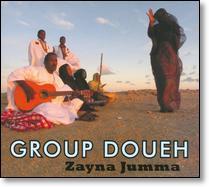 |
Airto: Fingers (1973 [2011], CTI/Masterworks Jazz): Brazilian percussionist Airto Moreira and wife Flora Purim cashed in on the 1960s bossa nova craze, then hooked up with Chick Corea's Return to Forever fusion band and fell into CTI's lap; this cooks all their affections down to an unrecognizable mish mash, clunky when he tries to sing, otherwise slick or airy or incoherent. B-
Jackie Cain & Roy Kral: A Wilder Alias (1973 [2011], CTI/Masterworks Jazz): More often just Jackie & Roy, singer and pianist-vocalist-arranger, started out in 1954 and had been around the block a couple times before CTI picked them up; I don't know them well enough to tell how anomalous this is, but the voices are lashed to the contours of some incredibly loopy music, with Joe Farrell's sax the sole relief, the flute and vibes solos faring far less well. C-
Glen Campbell: Big Bluegrass Special (1962, Capitol): His first, co-credited to the now-forgotten Green River Boys, draws heavily on the Delmore Brothers and Merle Travis, trad fare that lets them mix the exemplary guitar up front of the so-so vocals. B+(*) [R]
Rodney Crowell: Ain't Living Long Like This (1978, Warner Brothers): Born in Houston, based in Nashville, still his first album aims more for Gram Parsons country than for newfangled neotrad, hitting the target solid with "California Earthquake" but not producing as much shaking as they claim. B+(***) [R]
Group Doueh: Zayna Jumma (2011, Sublime Frequencies): Recorded in Dakhla on the Western Sahara seacoast, founded in 1502 by Spanish colonists and disputed by Morocco and Mauritania since 1975; Salmou Bamaar (Doueh) is a Hendrix-school guitarist, which puts a charge into the native percussion and vocals. A-
Joe Farrell: Outback (1970 [2011], CTI/Masterworks Jazz): An underrated tenor saxophonist, dead before his 50th birthday, leads a quartet with Chick Corea on electric piano, Buster Williams, and Elvin Jones; the title track opens weakly on flute, so this takes a while to get moving, only catching fire on the final track. B+(*)
Willis Jackson/Von Freeman: Lockin' Horns (1978 [2000], 32 Jazz): Freeman has a rep for going his own way, but he's slumming here, adding a second tenor sax to Jackson's soul jazz group -- Carl Wilson on organ, guitarist Joe "Boogaloo" Jones, and drummer Yusef Ali; early going may just be Jackson, but when they do joust they kick up a storm. B+(*) [R]
Keith Jarrett: Bop-Be (1976 [1978], Impulse): The last album of Jarrett's US Quartet, with Dewey Redman on tenor, Charlie Haden on bass, and Paul Motian on drums, going out with a little bit special from each of the stars; Jarrett had an extraordinarily prodigious stretch in the early 1970s, but thenceforth limited himself to trios and solos -- this reminds you how strong a force he could be in a group. A- [R]
Cheryl Lynn: Cheryl Lynn (1978 [2010], Reel Music): Debut album, leads off with his big disco hit "Got to Be Real"; nothing else like that, of course, some filler and some better than filler, the latter stepping high on hotter beats. B+(**) [R]
Stephin Merritt: Obscurities (1992-99 [2011], Merge): Some singles, some contract work, some unreleased whatevers, from the days when Merritt mostly recorded as Magnetic Fields -- presumably the disc comes with some details but I'm not privy to them; simple melodies with eccentric percussion backing his deep monotone, disjointed pieces juxtaposed, on sonic and possibly historical interest, or not. B+(**) [R]
Son Seals: Live and Burning (1978, Alligator): Blues journeyman, came up too late to make much of name for himself, but typified his label's normalization of the post-rock-and-roll, post-Chicago blues, a genre that will live on as long as a stinging guitar lick promises salvation from bad times. B+(**) [R]
Legend: B+ records are divided into three levels, where more * is better. [R] indicates record was reviewed using a stream from Rhapsody ([X] is some other identified stream source; otherwise assume a CD). The biggest caveat there is that the packaging and documentation hasn't been inspected or considered, and documentation is especially important for reissues. But also my exposure to streamed records is briefer and more limited, so I'm more prone to snap judgments -- although that's always a risk.
For this column and the previous 89, see the archive.
Notes
Copyright © 2011 Tom Hull.